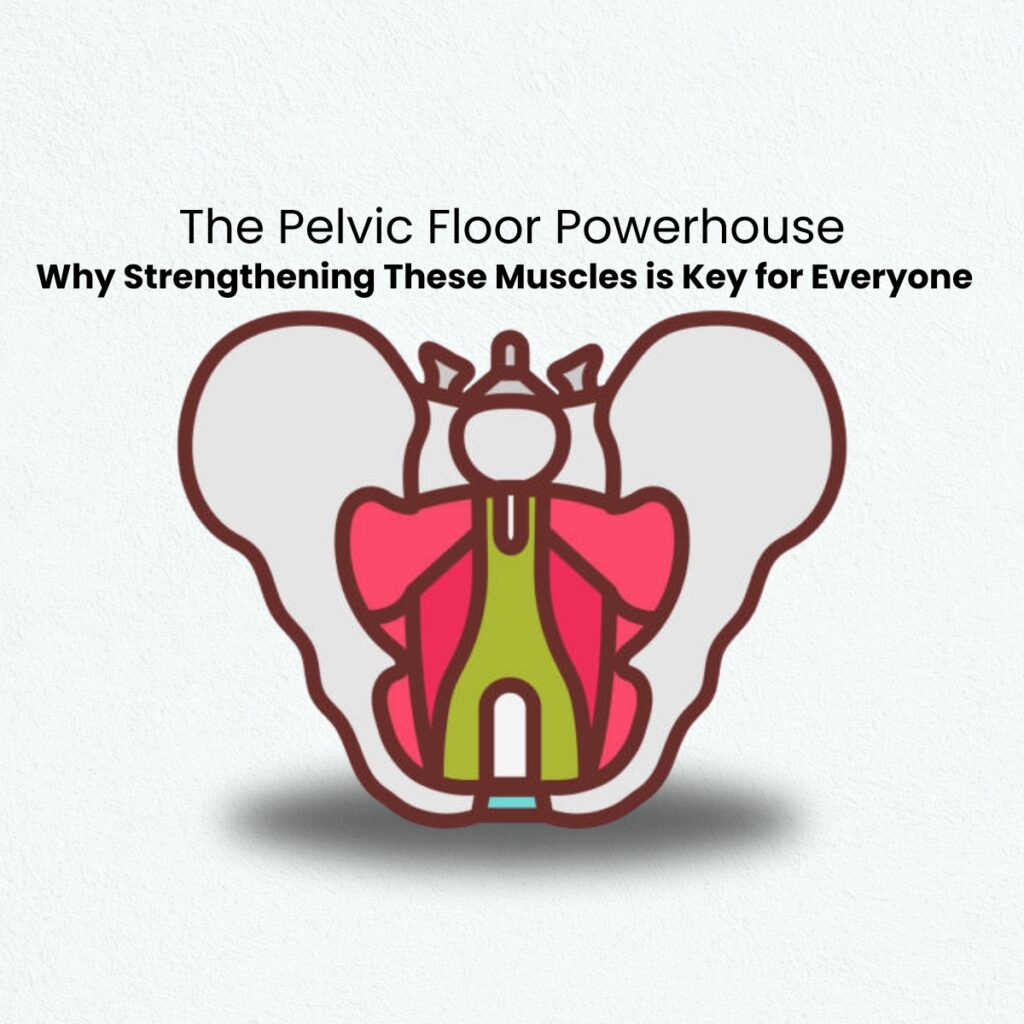When we think about building a strong core, we often focus on our abs and back. But there’s a group of muscles that’s just as, if not more, crucial to our overall stability and health: the pelvic floor. Often overlooked, these muscles are the “powerhouse” that supports our core, and strengthening them is essential for everyone, not just those who have had children.
What Exactly is the Pelvic Floor?
The pelvic floor is a sling or hammock-like group of muscles located at the base of your pelvis. They stretch from your pubic bone to your tailbone and from side to side. Think of them as the foundation of your core, holding up your bladder, bowels, and uterus (in women). They play a vital role in several bodily functions, including:
- Bladder and Bowel Control: A strong pelvic floor helps you control the release of urine and feces, preventing issues like incontinence.
- Core Stability: These muscles work with your deep abdominal and back muscles to provide stability for your spine and pelvis, which is crucial for good posture and preventing back pain.
- Sexual Function: Pelvic floor muscles are integral to sexual sensation and function in both men and women.
- Support for Pelvic Organs: They literally hold up your internal organs, preventing prolapse.
Why Everyone Should Focus on Pelvic Floor Health
It’s a common misconception that pelvic floor exercises, like Kegels, are only for women, particularly after childbirth. However, both men and women can experience pelvic floor dysfunction due to a variety of factors, including:
- Age: As we get older, muscle tone can naturally decrease.
- Chronic Straining: This can be caused by constipation, a chronic cough, or lifting heavy weights incorrectly.
- High-Impact Exercise: Activities like running or jumping can put stress on the pelvic floor.
- Prostate Issues in Men: Surgeries or conditions related to the prostate can weaken the pelvic floor.
- Pregnancy and Childbirth: The extra weight and the act of giving birth can stretch and weaken the muscles.
Weak pelvic floor muscles can lead to issues such as urinary incontinence, pelvic organ prolapse, and pain in the lower back or pelvis. On the other hand, an overly tight or hypertonic pelvic floor can cause pain during intercourse, urination, or bowel movements.
How to Strengthen Your Pelvic Floor
The most well-known exercise for strengthening the pelvic floor is the Kegel. To perform a Kegel, you simply contract the muscles you use to stop the flow of urine. You can do this lying down, sitting, or standing. Squeeze and hold for a few seconds, then release. Repeat this in sets of 10 to 15, three times a day.
However, pelvic floor health is about more than just Kegels. It’s about overall core awareness and coordination. Incorporating exercises like squats, bridges, and planks with a focus on engaging your pelvic floor can be very effective. It’s also important to learn how to properly relax these muscles.
The Takeaway
The pelvic floor is a vital part of your body’s support system. Strengthening these muscles isn’t just about preventing issues—it’s about improving your quality of life. By incorporating a few simple exercises into your routine, you can build a stronger foundation, improve core stability, and feel more confident and in control. If you have any concerns or are unsure about how to properly engage these muscles, consult with a physical therapist specializing in pelvic health. They can provide personalized guidance and a tailored exercise plan to help you unlock your “Pelvic Floor Powerhouse.”

